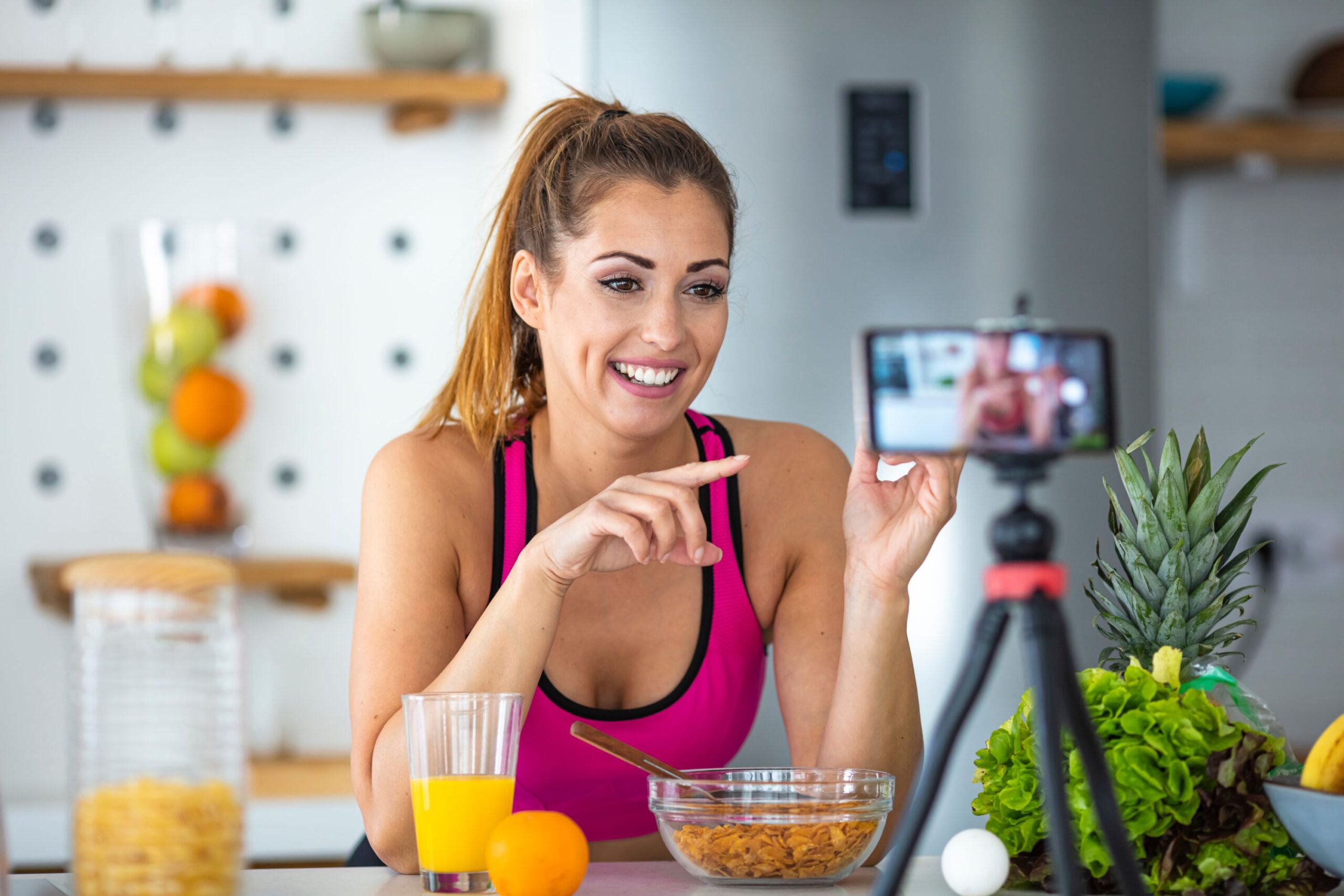Influencer endorsements are a form of digital word-of-mouth marketing where social media creators promote products or services to their followers. These creators, often called influencers, have built trust with their audience through consistent, relatable content. When they recommend a brand, whether through a post, video, reel, or story, it acts as a personal suggestion rather than a direct advertisement. That’s what makes it powerful. It feels natural. Instead of a company saying “buy this,” a person your audience already listens to is saying, “I use this—and here’s why.”
In the context of social media markets, influencer endorsements help brands increase visibility, build credibility, and drive conversions. They bridge the gap between consumers and companies in a way that traditional ads often can’t. These endorsements allow businesses to tap into existing communities, speak authentically, and engage users where they spend the most time—scrolling through platforms like Instagram, TikTok, and YouTube.
Types of Influencer Endorsements and Their Roles in Campaigns
Influencer endorsements don’t come in one shape. The format, the level of collaboration, and the expectations vary depending on the campaign goals. When you understand the types of endorsements available, you can choose strategies that match your budget, brand tone, and audience behavior.
Sponsored Posts
A sponsored post is when a brand pays an influencer to create and publish content highlighting its product or service. It can be a photo, video, story, reel, or even a blog article. These posts usually include labels like #ad or #sponsored, which are required for transparency and compliance.
Why does it work? People don’t like being sold to, but they’re comfortable receiving advice from someone they admire. A sponsored post blends marketing into content that followers are already consuming. Instead of appearing as an ad, your message feels part of the conversation.
For example, a wellness brand might pay a yoga influencer on Instagram to feature their new line of protein powder in a morning routine reel. It feels natural when that influencer walks viewers through a “what I eat in a day” video and mentions how the product fits into their healthy habits. That authenticity boosts interest and conversions.
Benefits:
- Immediate exposure to a targeted audience
- Control over campaign timing and message
- Higher credibility if the influencer’s tone stays genuine
- Strong potential for reach if the content gets shared or reposted
Product Gifting or Seeding
Product gifting, or influencer seeding, is a lower-cost method where brands send free products to influencers without payment. While there’s no guarantee of coverage, many influencers will post about the product if they like it, especially if it’s relevant to their content.
This type works best with nano and micro-influencers, who are more open to genuine collaborations and usually operate without rigid posting requirements. They also tend to be more enthusiastic, offering detailed reviews, multiple mentions, or even unboxing videos if they feel appreciated.
Let’s say you run a startup that makes eco-friendly notebooks. Instead of spending money on sponsored posts, you could identify 30 niche influencers who focus on sustainable living, send them a personalized package, and politely ask them to try the product. If 10 of them post it to their stories or include it in a “sustainable office tour” video, you’ve just created organic buzz without paying per post.
Benefits:
- Low financial risk
- Authentic, voluntary content that feels honest
- Potential for long-term relationships
- High engagement from niche, loyal audiences
Affiliate Endorsements
This is a performance-based model where influencers promote a product and earn a commission on every sale through their unique referral link or code. It’s especially common in e-commerce and subscription-based services.
Affiliate endorsements are often seen on platforms like YouTube and TikTok, where influencers include product links in video descriptions or mention their discount code during the video.
Why does it work? It creates a win-win situation. The influencer is incentivized to keep promoting your product, and the brand only pays when a sale is made. Consumers also benefit from small discounts (e.g., “Use code JANE10 to get 10% off”), which motivates action.
For example, a fitness content creator might review resistance bands from your shop. If viewers use the creator’s link or code to buy the bands, they get a discount, the influencer gets a commission, and you get the sale.
Benefits:
- Measurable ROI from the first day
- Lower upfront cost—no payment unless there’s a conversion
- Long-term passive promotion of old content keeps getting views
- Suitable for scaling across dozens or hundreds of creators
Long-Term Brand Ambassadors
Brand ambassador programs are extended partnerships where an influencer becomes a recurring voice for your brand over time. They mention your brand across multiple pieces of content, often over months. This consistency helps followers remember and trust your product.
These endorsements are particularly effective in industries where customers make purchase decisions slowly, like skincare, tech, or travel. Seeing repeated endorsements over time builds familiarity and trust.
Imagine a travel brand choosing a mid-level influencer to promote luggage, apparel, and accessories during international trips throughout the year. Instead of one-off posts, the influencer casually integrates the brand into their packing lists, airport routines, and travel tips. Over time, their followers begin to associate them with that brand—naturally.
Benefits:
- Long-term visibility and recurring mentions
- Stronger association between brand and influencer identity
- More storytelling opportunities (before/after, lifestyle integrations)
- Higher trust and loyalty from followers due to repeated exposure
Social Proof and Credibility: What Influencer Endorsements Add to Your Brand
Influencer endorsements don’t just create exposure—they shape perception. Your brand gains immediate credibility when a trusted voice uses your product and shares the experience publicly. That’s the power of social proof. It signals to others: “This is worth paying attention to.” And in a space as crowded as social media, attention is currency.
For new or emerging brands, this trust is hard to build through ads alone. An endorsement acts as borrowed credibility—it helps your brand appear more reliable, familiar, and desirable, without saying so yourself. It also lowers the psychological barrier to entry. When potential customers see someone they follow already using your product, they feel more confident considering it.
But the impact goes deeper. Influencer endorsements help shape your brand narrative in real time. Instead of scripted taglines, people hear a product described in relatable, everyday language. That language sticks. It’s how your product becomes part of casual conversations—how it moves from something new to something trusted.
A creator showing how your tech gadget fits into their workflow, or how your energy bar fuels their training sessions, gives your brand functional context. You’re no longer a logo—they’ve shown what you do, how you fit into real life, and why someone might choose you over a competitor.
This kind of organic credibility leads to more than one-time interest. It builds familiarity. Over time, as multiple creators share your product, people recognize the brand on their feeds. That repetition, across different lifestyles and tones, forms a pattern of trust that strengthens your market position without relying on aggressive promotion.
In short, influencer endorsements help you stop pitching and start proving.
How to Find the Right Influencers for Your Campaign
Not every influencer will help your brand grow. Choosing the right partner isn’t about who’s most popular—it’s about who’s the right fit. The goal is to find influencers whose audience matches your target market, whose tone fits your brand identity, and whose content already attracts the people you’re trying to reach. If that alignment isn’t there, no amount of exposure will translate into results.
When evaluating potential collaborators, use a practical checklist, not just intuition. Here’s what to consider:
Engagement Rate Over Follower Count
A large audience doesn’t mean much if that audience isn’t active. An influencer with 300,000 followers and low engagement may deliver worse results than 10,000 highly engaged fans. Likes, comments, shares, and story replies matter more than raw numbers. If people are reacting, asking questions, and tagging their friends, that’s a healthy sign.
You can check for patterns. Look at their last 10 posts. Do they consistently spark conversation? Is their audience real or filled with bots? A 3–6% engagement rate on Instagram is solid. On TikTok, even higher rates are common. Prioritize engagement first—reach comes second.
Content Relevance
Your product should naturally fit into the influencer’s usual content. If it doesn’t, the endorsement will feel forced, and followers will notice. That breaks trust and lowers the impact of your message.
If you’re selling running shoes, partner with someone who shares training routines, not just fashion hauls. If you’re marketing a language learning app, find a creator who regularly posts about travel, personal development, or studying techniques. Relevance makes the endorsement feel real, and real posts generate results.
A smart move is to study the influencer’s posts from last month. Would your product blend in, or would it feel like an interruption? That tells you everything.
Audience Demographics
Before signing a deal, closely examine the influencer’s audience. Don’t assume their followers reflect their background. Someone based in Germany may attract an American audience. A fashion creator in their 20s might have a following of teenage fans. If you’re targeting Gen Z in North America, but the influencer’s reach is mostly Southeast Asia, you won’t see the traction you expect.
Ask for media kits or audience insights. Platforms like Instagram, TikTok, and YouTube all offer demographic data—age, location, gender, and interests. Cross-reference that with your target customer. The better the overlap, the more likely you are to convert viewers into buyers.
Tone and Brand Alignment
Influencer endorsements are most effective when the creator’s voice feels like an extension of your brand. If your product is sleek, minimal, and professional, you don’t want to be represented by someone who uses sarcastic humor and chaotic visuals. It creates dissonance.
When reviewing an influencer’s tone, ask yourself:
- Do they communicate with honesty or exaggeration?
- Are they educational, playful, edgy, or polished?
- Would your customers trust them?
Your brand has a personality. Their content should echo it.
For example, if you’re promoting productivity tools, someone who shares time management hacks and clean aesthetic reels makes sense. But if that same influencer mostly posts comedy skits and satire, they might not be a fit even with high engagement.
Platform Strategy
Each platform has its rhythm, audience behavior, and content format. What performs well on Instagram might get buried on YouTube. TikTok excels in short bursts of entertainment, while LinkedIn favors industry thought leaders.
The key is to show up where your customers are most active. If your audience spends time on TikTok, choose influencers who understand trending sounds and quick storytelling. If you’re a B2B software company, you’re better off with LinkedIn creators or YouTube educators.
Think platform-first:
- Instagram = visuals, lifestyle, storytelling
- TikTok = quick entertainment, viral trends, humor
- YouTube = long-form reviews, tutorials, deep dives
- Pinterest = mood boards, product discovery, seasonal trends
- LinkedIn = professional tone, industry authority, service-based offers
Match the platform to your message and the influencer to your product category.

Measuring the ROI of Influencer Endorsements
One of the most important things about influencer endorsements is that reach alone doesn’t equal results. What matters is how that reach performs—and that’s where ROI (Return on Investment) comes in. If you’re using influencer marketing within social media markets, you need to track what works and what doesn’t with real numbers, not assumptions.
There’s no universal formula, but you can measure ROI by comparing your spending on an endorsement with the tangible value it delivered. Depending on your campaign goals, that value might be direct sales, leads, app installs, website traffic, engagement, or brand awareness.
Start by defining your goal. Are you trying to generate conversions? Grow your email list? Drive traffic to a landing page? Once your goal is clear, choose metrics that reflect it. For example:
- If sales are the goal, use affiliate codes or UTM links to track conversions.
- If awareness is the goal, measure reach, impressions, and branded search volume increases.
- If engagement matters, track saves, comments, shares, and profile visits.
You don’t need enterprise tools to do this. Google Analytics, TikTok Creator Marketplace, and Instagram’s insights dashboard provide data you can act on. Remember that success doesn’t always appear in the first 24 hours—some influencer content continues driving traffic for weeks after posting.
What you should avoid is judging an endorsement by surface-level stats alone. A post might get fewer likes, but if it drives high-value actions like purchases or form submissions, it’s working better than you think.
What Makes an Influencer Campaign Successful?
There’s no magic formula, but successful campaigns share a few common traits. If you’re aiming to get results in social media markets, here’s what tends to work best:
1. Clear Messaging and Creative Freedom
Give influencers structure, but don’t over-script. Your message should be clear—what’s the product, what’s the goal—but the delivery should feel like the creator’s voice. Followers can tell when something sounds off-brand. When influencers speak naturally, the message lands better.
Example: A fashion brand might ask an influencer to show three ways to style their new jacket. Instead of giving them a word-for-word script, they can provide key points (materials, price, link) and let the creator build an outfit around it in their usual style.
2. Visual Consistency With the Creator’s Content
People are more likely to pay attention to content that looks and feels like a regular post. When it feels like a commercial, they’re more likely to skip it.
Success comes when the post matches the influencer’s aesthetic and tone. If the creator is known for clean visuals and subtle editing, don’t ask them to use bright graphics and flashy effects. Keep your brand flexible and let it blend into their world.
3. Targeted Timing
Good timing can double your results. Launch your campaign when your audience is most active or your product is most relevant. For instance:
- Wellness products around New Year’s resolutions
- Travel services in spring and early summer
- Fashion items right before major holidays
Social media markets shift fast—timing your campaign well means you show up when people are ready to buy, plan, or engage.
4. Collaboration, Not Just Transaction
When influencers feel involved, they create better content. Share your vision, ask for their input, and treat them like a creative partner, not just a media slot.
Strong collaborations often lead to repeat campaigns or long-term ambassadorships. That’s where the absolute brand loyalty starts. When a creator mentions your brand over months instead of days, their audience begins to trust you without being convinced.
How to Scale Influencer Endorsements Across Social Media Markets
Once you’ve seen success with one or two influencer partnerships, the next step is scaling. But scaling doesn’t mean just hiring more creators. It means building a system that lets you grow consistently while staying aligned with your brand voice.
Start by documenting what’s working. Which creators performed best? What platform delivered the highest engagement or conversions? What kind of content resonated most with the audience—stories, reels, reviews, tutorials?
Use that insight to create a repeatable framework:
- A clear onboarding guide for new influencers
- Template briefs that outline your tone, goals, and do’s/don’ts
- Defined metrics to evaluate every collaboration
- A simple feedback loop so influencers can share what worked for them
Instead of manually managing every campaign, you can batch your outreach, group influencers into tiers, and plan content in waves. For example, 10 creators launch a new product on the same day, followed by 20 more a week later. That keeps your message active without overwhelming your team.
Scaling well also means staying personal. Even when working with dozens of influencers, make sure each one feels like a valued partner, not just a line item. This will pay off in content quality and long-term brand loyalty.
When to Use Platforms or Agencies to Manage Campaigns
As your influencer marketing grows, doing everything in-house becomes harder. That’s where influencer platforms or agencies come in. The right tools help you find the right creators faster, manage multiple campaigns, and track performance in one place.
Influencer platforms like Aspire, Upfluence, or CreatorIQ give you access to databases of vetted influencers. You can search by audience size, platform, niche, location, or engagement rate. Most tools let you manage outreach, contracts, content approval, and payments in one dashboard.
Agencies, on the other hand, take over the campaign management entirely. They handle sourcing, communication, creative direction, and analytics—ideal if you’re short on time or launching a large-scale campaign.
When should you consider outside help?
- You’re working across multiple platforms and product lines
- You want to scale fast without hiring a full internal team
- You’re launching a time-sensitive campaign and need execution support
- You’re struggling to manage creator communication or performance tracking
If your brand operates in fast-moving social media markets, structured support can help you maintain quality while growing reach.
How Influencer Endorsements Shape Brand Identity Online
Influencer endorsements don’t just create buzz—they help define how people see your brand. Each collaboration allows you to communicate your values, voice, and positioning through someone else’s content.
If your product keeps showing up in high-energy, humorous content, you’ll be seen as fun and approachable. If your endorsements focus on quiet, thoughtful reviews and clean visuals, people will associate you with calm, minimalism, or trustworthiness.
This matters. Consistent branding through influencer content gives you an edge in a digital landscape where customers form opinions in seconds. It turns endorsements into assets that work long after the post is live.
You can set brand guidelines that still allow creative freedom. Share a brand story or message pillars. Let influencers bring their own voice but align them with what you stand for. This way, whether someone sees your product in a story, a reel, or a YouTube review, the impression they form is what you intended.
Remember, your brand isn’t just what you say—what others say about you. Influencers are often the first to say it out loud.
FAQs
What’s the difference between influencer marketing and influencer endorsements?
Influencer marketing is the overall strategy. Influencer endorsements are one specific format in which an influencer recommends a product directly to their audience.
How do I know if an influencer is authentic?
Check their content history. Do they regularly post sponsored content? Do they respond to comments? Consistency and engagement usually signal authenticity.
How many influencers should I work with for a campaign?
If you’re testing, start with 3–5. Once you have performance data, scale to 10–50, depending on budget, product category, and platform.
Do influencer endorsements work for service-based businesses?
Yes. Services like coaching, software, and consulting can benefit when influencers share case studies, results, or personal experiences.
Should I let influencers write their captions?
Yes—with boundaries. Give them core points or keywords, but let them use their tone. Audiences respond better to natural language.
What platform is best for influencer endorsements?
It depends on your audience. TikTok works for trends and quick conversions, YouTube for depth and trust, and Instagram for lifestyle and aesthetics.
How long should a campaign run to see results?
Short-term bursts can drive traffic fast, but long-term partnerships build brand recognition and better ROI. Consider combining both.


